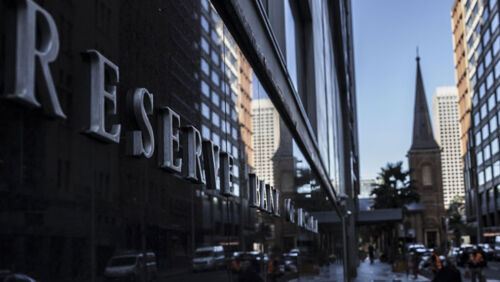Why your home loan might cost more even if the RBA doesn't hike rates
By Graham Cooke
The cash rate is unlikely to increase this year, but that doesn't mean your low home loan interest rate is guaranteed to stay put.
According to the 39 economists who took part in April's Finder RBA Cash Rate Survey, Australia's cash rate will stay at 0.10% for the foreseeable future. For homeowners and potential buyers, this should be good news. As home loan rates usually rise and fall with the cash rate, a low cash rate should ensure ongoing low interest rates for homeowners.
However, history tells us that in an extended period with a static rate, banks tend to do their own thing - including pushing up interest rates.
The cash rate determines the fee that your bank pays to the Australian central bank for borrowing money. A high cash rate means that borrowing is expensive - banks become more reliant on the cash in their vaults and charge consumers a higher rate to lend it out.
A low cash rate has the opposite effect - with banks able to access loans cheaply, they are able to pass those savings on to their customers. Competition between the banks ensures there is ample market pressure for the banks to promptly follow the cash rate.
However, a bank's cost of doing business can change even if the cash rate doesn't move. While banks would normally factor the extra costs of doing business into their interest rate cuts - reducing their rate by a little less than an RBA cash rate cut to compensate for increased costs, for example - an extended period of cash rate stagnation means there are no opportunities for banks to adjust rates in response to the RBA.
In this situation, they often decide to move their home loan rates independently. This is called an out-of-cycle rate hike - and they are not uncommon.
For 34 months between August 2016 and May 2019, Australia's cash rate sat unchanged at 1.50%. Over this same period Australian banks changed their interest rates seven times, according to Reserve Bank data. Five of those moves were rate increases.
The RBA's data covers registered financial institutions which, according to APRA, have $6 billion or more on their housing loan books. This threshold captures 95% of the total home loan market.
The data shows that the average variable rate across Australian banks was 5.26% at the beginning of this period, rose to 5.29% by May 2017 and then fell to 5.22% two months later. It remained at this lower rate for 15 months before a series of increases between September 2018 and January 2019 resulted in a new average rate of 5.37%.
While these are not huge movements, they can still impact the cost of your loan. With the average Sydney home at the start of this period costing around $900,000, a rate increase from 5.26% to 5.37% would cost the average purchaser an extra $590 annually, presuming they paid a 20% deposit.
Therefore even if the RBA decides to leave the cash rate at 0.10% until the end of 2022, as predicted by the majority of economists in our survey, this does not mean your home loan repayments will stay the same.
While we saw moderate variable rate movements during the last period of stagnation, the next few months will be a very unpredictable time for the Australian and world economies. With vaccination program rollouts slowing in many countries and international travel likely to remain restricted for the foreseeable future, the cost of doing business for the banks may fluctuate. This could lead to more dramatic out-of-cycle rate changes than we have seen before.
The lesson here for potential first-time buyers is - don't set your budget based on today's rates remaining in place. For both current and potential homeowners, these numbers emphasise the importance of shopping around and reducing the interest rate you are currently paying. After all, future rises can be absorbed if you move to a lower rate now.
While the housing market is surging in favour of sellers, the low interest rates and increased competition between banks for owner-occupier business is resulting in very good value out there for homeowners and potential buyers - or at least those who are willing to do a little work to find it.
Get stories like this in our newsletters.



